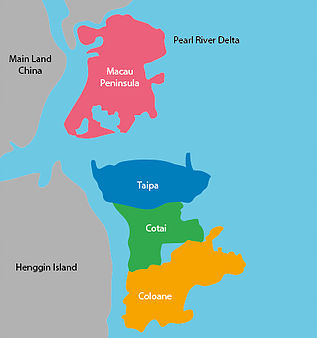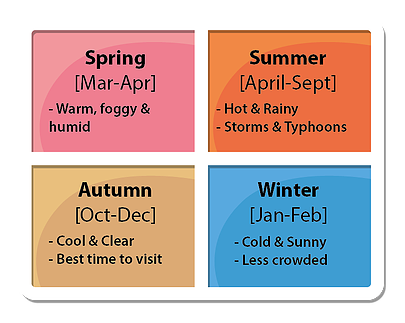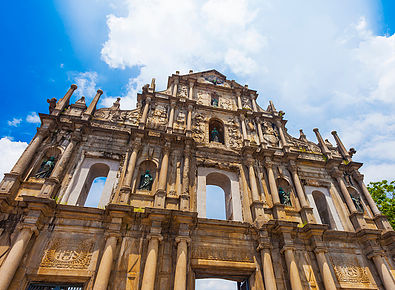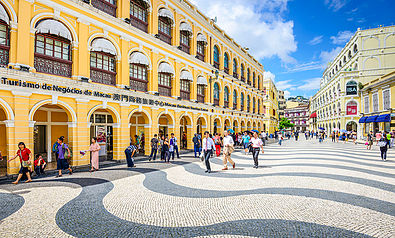
Macau
Attractions
Gambler’s Haven, Portuguese Buildings and Southern Chinese culture, Macau may be a tiny sliver of a peninsula however this special administrative region boasts a myriad of contradictions, being at once wildly extravagant and elegant, distinctly Chinese yet Western, traditional and modern, but certainly never dull.
Literally meaning ‘Bay Outlet’, Macau is situated off China’s Southeast coast an hour’s ferry ride from Hong Kong. Once a former Portuguese colony for 400 years, Macau was restored to China in 1999. Today it is commonly known as ‘Asia’s Las Vegas’ for its huge gambling and tourism industry. In fact, Macau boasts the world’s largest casino and annual revenues that exceed Nevada. The S.A.R. is however more than just glitz and glamor, a short bus ride away from the casino’s and hotels will see you in Macau’s old town, an area where real Macanese culture is better glimpsed and admired.
Macau is much more than meets the eye. Its distinct identity cannot be replicated and remains a fascinating place to visit, whatever your lifestyle or taste.
Climate
Macau has a subtropical climate with annual temperatures of 23 degrees Celsius. The region experiences both wet and dry seasons, the former when Southerly winds arrive from the Pacific, and the latter when Northern Chinese and Siberian winds blow down. A seasonal breakdown can be seen here:


Geography
Macau can be divided into 3 islands.
Island 1: The Old City sits on this tiny peninsula directly connected to China’s Southern ‘Guangdong’ province via land reclamation.
Island 2: Taipa island is connected to the first island via 3 bridges.
Island 3: Coloane island in turn is connected to Taipa via the ‘Cotai Strip’ Causeway, an area of reclaimed land filled with hotel-casinos.
Currently there are border-crossings located on the northern peninsula and the Cotai Strip. Construction is also in progress for a huge bridge connected Zhuhai (Guangdong), Macau, and Hong Kong.

The Ruins of St. Paul’s
The Ruins of St. Paul is undoubtedly Macau’s most iconic landmark. Built in the 16th century and surviving repeated fires until 1835, the cathedral is distinct in its architectural features of both western and oriental influences. Listed in 2005 as UNESCO World Heritage protected, the Southern Wall Façade remains, free to the public and the historic heart of Macau.
Shopping: Senado Square
For shopping and beautiful Portuguese buildings, Senado Square should not be missed. This part of Macau’s Old City will keep you entertained for hours, consisting of numerous pedestrian-only lanes, cute boutiques, tea-houses and inexpensive shopping. Weekends typically see the square more jam-packed than usual, with a steady rotation of flea markets and various festival celebrations.


Nightlife: Club Cubic
Multi-levelled and extravagantly lavish, Club Cubic remains the premier upscale nightclub in the region, playing host to many passing international DJs with a huge dancefloor, stage, laser dance-pool and more.
Casinos: The Venetian Macau
Officially opened in August 2007, The Venetian symbolizes the sheer scale of Macau’s gambling industry. As the largest hotel-casino complex in the world, it is also the 7th largest building in the world by floor area, cost $2.4 billion USD to build, and remains modelled off its sister casino ‘The Venetian’ in Las Vegas. Situated by the Cotai Strip, gambler or not, the Venetian should certainly be experienced, quite simply for its ‘wow’ factor






